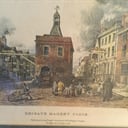In which science or technology is the term "petrosphere" used?
In archaeology, "petrosphere" is the name for any spherical man-made object of any size that is composed of stone. The word comes from Greek where "πέτρα" (pronounced "petra") means "stone", and "σφαῖρα" ("sphaira") means "sphere". These mainly prehistoric artifacts may have been created or selected, but altered in some way to perform their specific function, including carving and painting.
There is a wide variety of petrospheres found all over the world. The Carved Stone Balls, for example, are petrospheres found mostly in Scotland, but also elsewhere in Britain and Ireland. They date from the late Neolithic to possibly as late as the Iron Age. A wide range of theories has been produced to explain their use or significance but none of them has been widely accepted.
Still considered a great unsolved archaeological mystery, the near perfect ancient man-made stone spheres of Costa Rica were first found in the Diquis Delta, and hundreds more have been found all over the country.
There is a carved stone sphere on Easter Isle at the northern coastal area of the island.
The stone discovered in Bosnia in 2016 might be the largest petrosphere in Europe ever found. As of 2018, there is much debate if the feature is man-made or natural.
Naturally formed stone balls are distinguished from petrospheres and called concretions and spherulites.
More Info:
en.wikipedia.org











